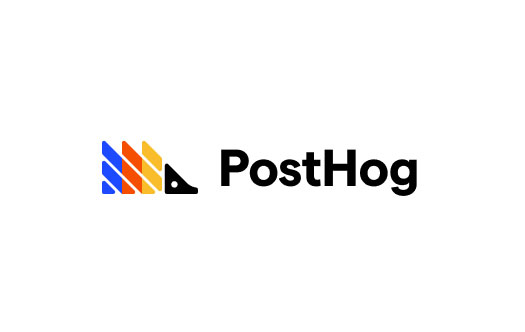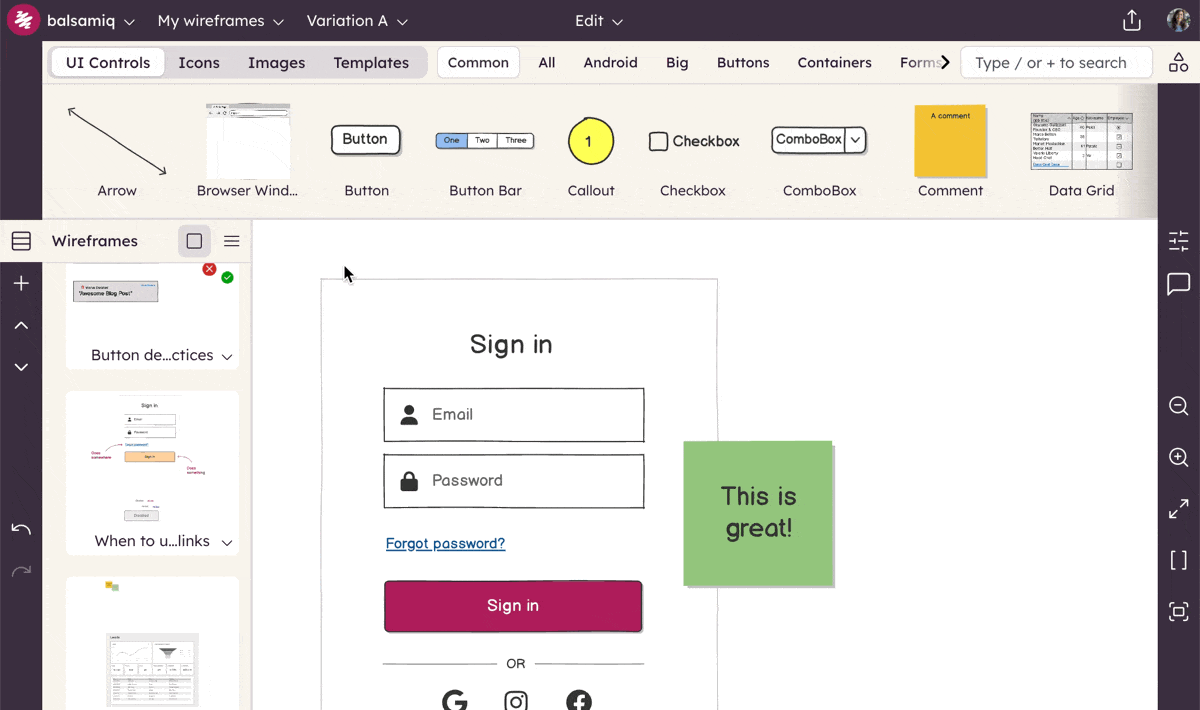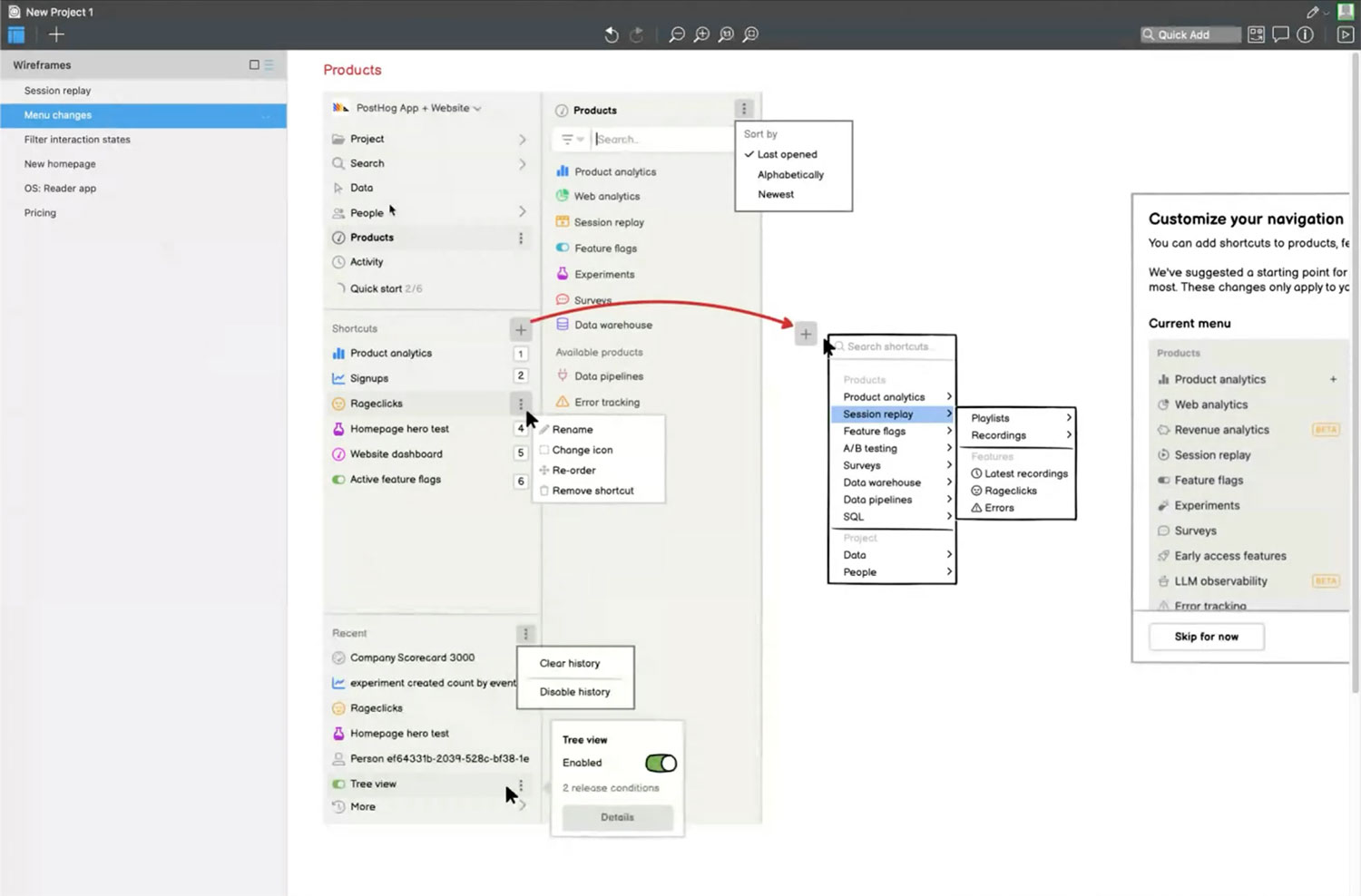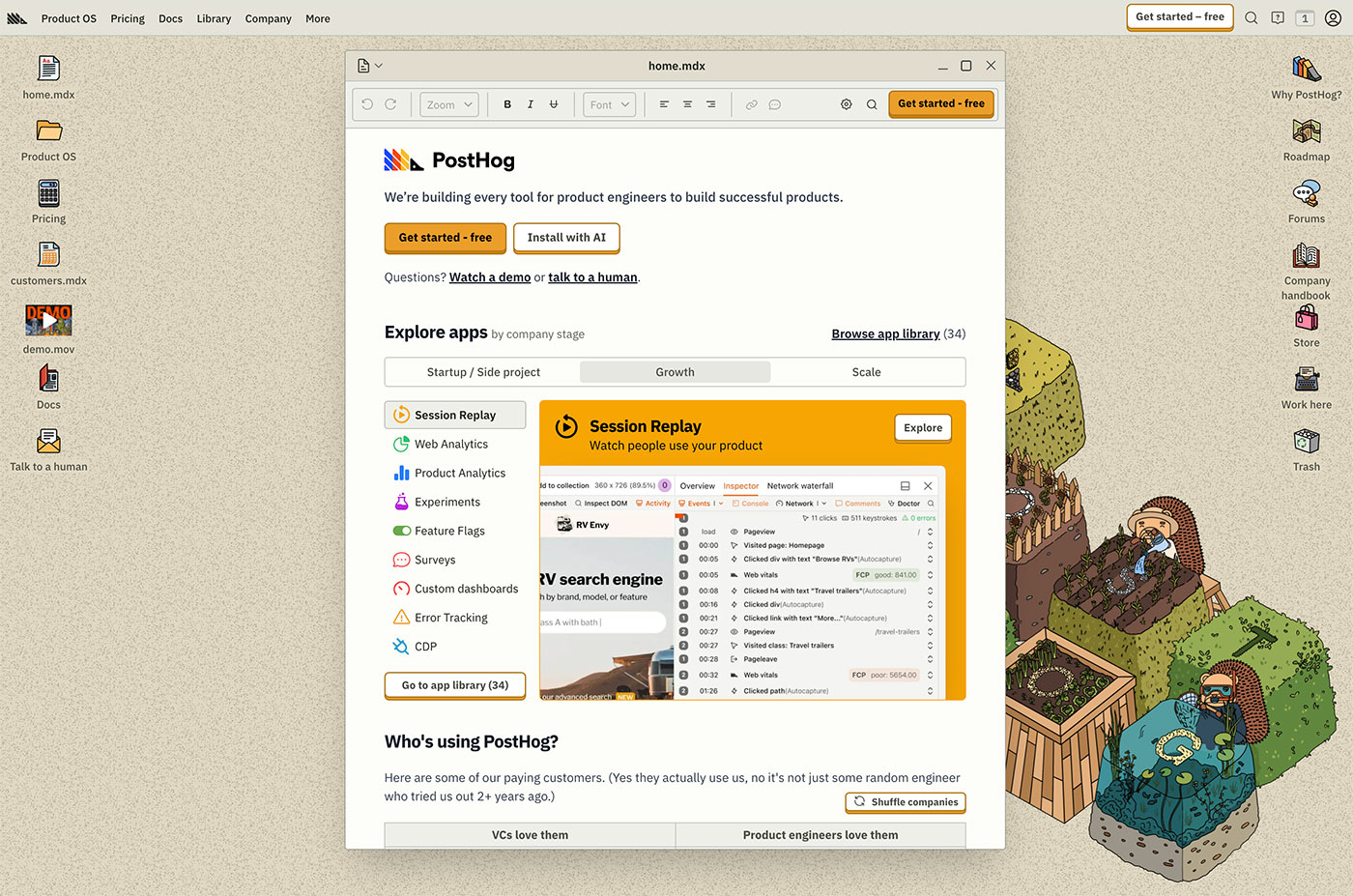TL;DR
Shipping fast is baked into PostHog’s DNA—and Balsamiq is a big reason Cory Watilo can keep up. As lead designer, design engineer, and self-described webmaster of PostHog.com, Cory uses Balsamiq to move from idea to wireframe to code without the usual slowdowns. No Figma, no docs, no confusion. Just fast, clear, visual thinking that leads to shipped features.
At a glance
- Company: PostHog
- Industry: Technology & Software
- Use case: Product & website design
- Company size: SMB / Mid-Market
- Key result: Reduces time from idea to code by 50% + enables faster shipping

Meet PostHog
PostHog is a product and data analytics platform that believes in building transparently and iterating quickly. Originally built as an open-source analytics platform, it’s now grown into a powerful suite of 14 product analytics and data tools trusted by over 100,000 teams worldwide.
Behind the scenes is Cory Watilo, PostHog’s lead designer, design engineer, and self-described webmaster of PostHog.com. Cory says his role is ultimately about "making sure the PostHog community understands all our products clearly," while also helping product engineers tackle UI and UX challenges.
He wears many hats, often codes what he designs, and has been using Balsamiq for over 15 years (some of those years at PostHog).

Endless docs and meetings? Hard pass.
In previous jobs before Cory joined PostHog, he experienced the usual slowdowns: long, exhausting documentation, too many rounds of pixel-perfect mockups, endless alignment, and off-topic debates.
I remember working at a more corporate tech company where you have a PM doing an 80-page requirements document for the smallest feature in the world and they're spending three months on documenting all this stuff. They need all these different states of mockups for ‘oh, what happens in this dialogue’ and ‘we need this other state for this dialogue'.
As Cory says, no one actually likes to work that way.
So when he joined PostHog, he knew he had to bring Balsamiq with him.
Bringing Balsamiq into PostHog
Balsamiq quickly became central to Cory’s daily workflow. He says it’s one of the most important tools in his tech stack!
For most projects at PostHog, Cory starts with wireframes. These vary between low-fidelity wireframes and what he calls “high-fidelity wireframes.” The latter are often made up of screenshots and wireframes layered on top, showing how different parts of the product or website experience could evolve.
He skips Figma mockups most of the time, often moving quickly to code-ready solutions. And like we mentioned earlier, he’s often the one coding them too.
"I honestly don't know how anyone doing UI work lives without Balsamiq,” Cory says. "It’s my number one tool for R&D."
A specific example: PostHog’s product suite had grown a lot over the past few years, and the navigation they were using no longer scaled. They needed to redesign it to handle more products and features.
So, Cory quickly wireframed a simplified menu in Balsamiq, iterating rapidly and clearly communicating his idea.
His team could instantly grasp how this new approach made sense, making their decision process fast and effective.
Our biggest challenge isn’t individual product features—it’s how they all fit together. We're constantly figuring out how our products interact, how data moves between them, and how to improve overall collaboration across our product suite.
PostHog recently launched a bold new version of their website, pushing the boundaries of creativity in their space.
Cory’s goal was clear: “the website needs to evolve and continue innovating so it won’t fall behind competitors.”
To get there, he started in Balsamiq, quickly sketching out ideas and getting everyone on the same page before moving into code.
The finished site shows how even the most inventive projects often begin with simple, low-fidelity wireframes.
And though everyone at PostHog is empowered to use whatever tools they’d like, Cory’s use of Balsamiq has spread to some of the product engineers.
How Cory uses Balsamiq every day
Quickly clarify product UI: Wireframes clearly show UI improvements, like navigation or small feature updates
Rapid low-fidelity prototyping: Mock new features and ideas swiftly, getting early feedback
Decision making: Quickly wireframing multiple solutions to clearly visualize trade-offs and make faster decisions (important for both new products and fitting features into the existing product suite!)
Clear team communication: Make sure everyone is on the same page by seeing something visually, perfect for PostHog’s fast-paced, remote culture
No-nonsense iteration: Use Balsamiq’s shortcuts and minimal UI to keep momentum high and unlock creativity
What’s in Cory’s Balsamiq workflow:
- He loves shortcuts
- He’s often working with screenshots
- He prefers working with Balsamiq’s panels hidden (more canvas space!)

Faster shipping and better decisions
Because Balsamiq is baked into Cory’s process, he doesn’t need design docs (they don’t exist at PostHog), the mental overhead of perfecting Figma files, or long feedback cycles.
With Balsamiq, he can sketch out an idea, get quick feedback if needed, and go straight to code.
It’s hard to measure exactly, but Cory says this way of working likely reduces idea-to-code time by 50% and enables him to ship exponentially faster, compared to teams using more traditional processes.
Even the built-in limits of Balsamiq help. “If a UI component or icon doesn’t exist in the Balsamiq library, it probably shouldn't be part of whatever I'm building,” Cory jokes. Those constraints help him focus on what really matters—and ship it.
Balsamiq also plays a key role in Cory’s creative process. "Great design is often the result of countless iterations and unique ideas," he says. "Balsamiq enables me to do that faster than any other tool."
Ultimately, Cory says Balsamiq has been a huge part of his success, both at PostHog and throughout his career.
This is the tool that more people should be using. Their work would be better for it.



